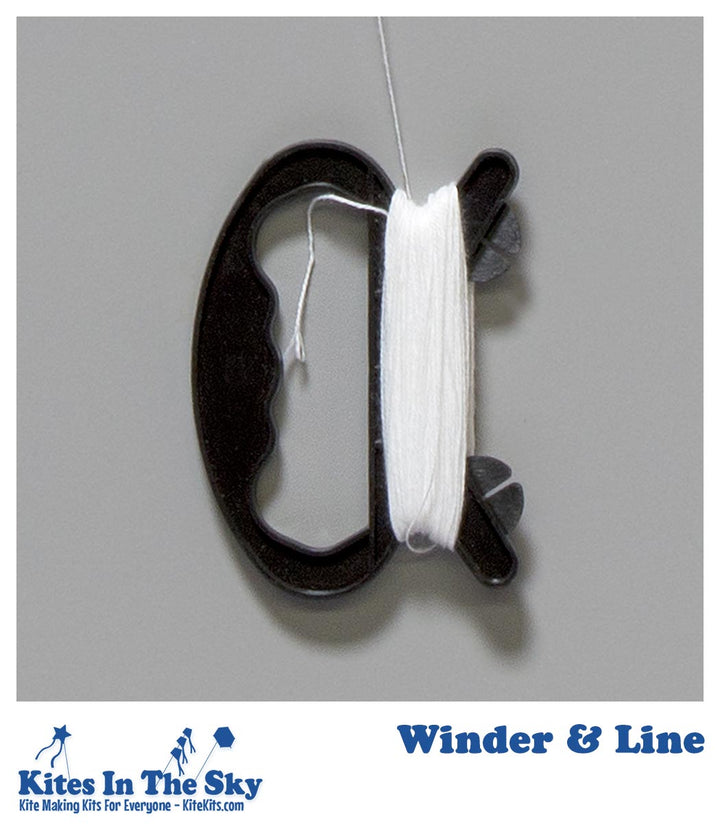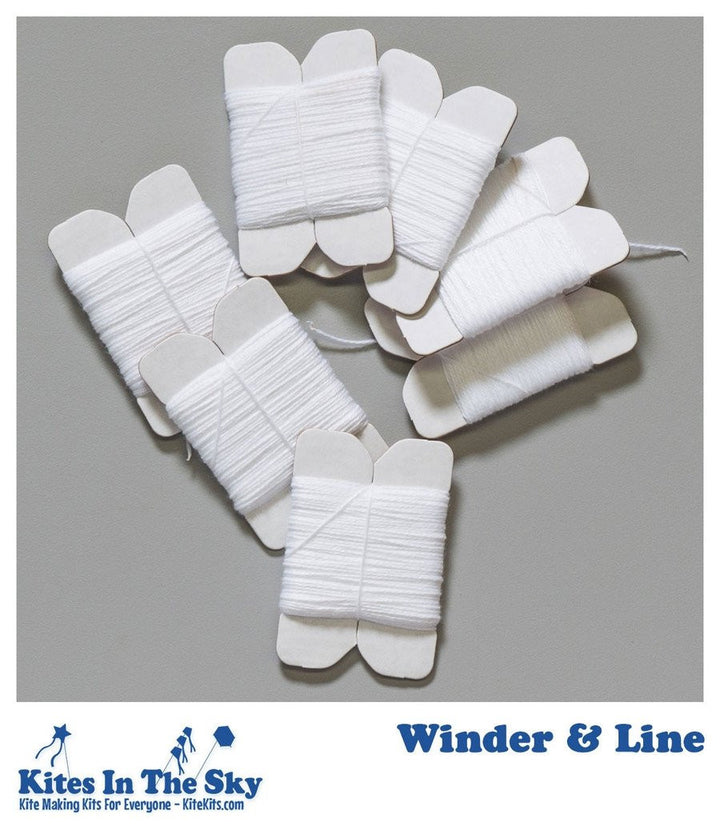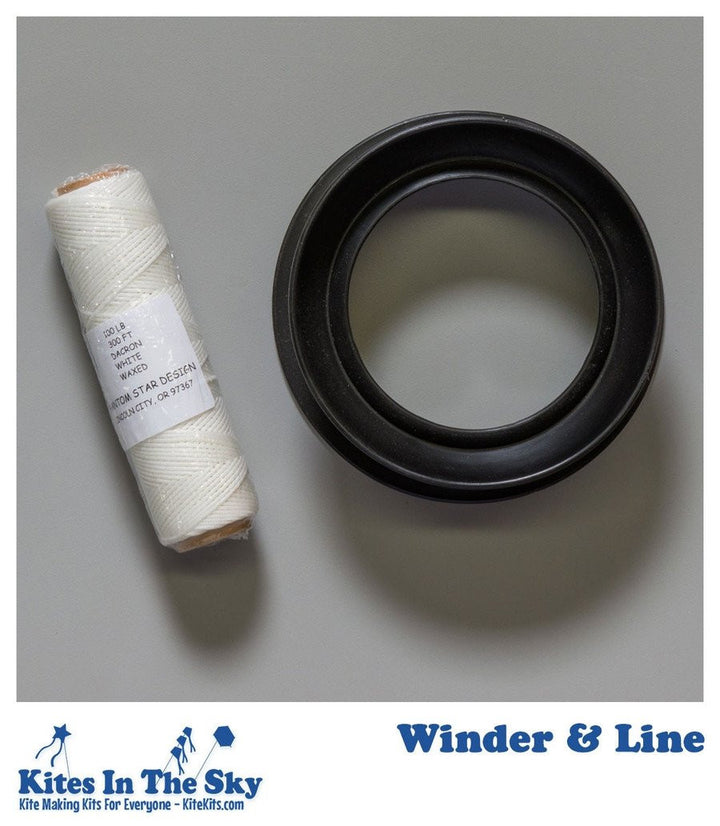
Tangles Happen: Handle Kite Line Tangles Like a Pro!
As any experienced kite flyer knows, tangles are a common occurrence. Let's explore practical tips for dealing with kite line tangles and keeping your flying experience enjoyable.
Why Tangles Happen
When you’re out flying a kite, tangles can occur due to various factors, such as twisted line, wind conditions, obstacles, or even other kites.
Wind can shift suddenly, causing lines to cross and tangle. Obstacles like trees, poles, and even other kites can create tricky situations. Improper handling or storing of the kite lines can also lead to twisted line, knots and tangles.
Understanding these factors can help you prevent and manage tangles more effectively. The absolute best way to deal with tangles will always be to prevent them from happening in the first place. But tangles happen. It's inevitable, you will have to deal with it at some point.
Here are some tips...
Tips to Avoid Tangles
Fly in Open Areas: Buildings and trees can disrupt the wind flow, causing it to swirl and roll, which often leads to tangles.
To ensure smooth and steady wind for your kite, always choose wide-open spaces like parks, beaches, or fields. These areas provide a consistent wind flow, minimizing the chances of your kite lines getting crossed or tangled.
2. Monitor Wind Conditions: Flying kites in moderate, steady winds helps reduce the risk of tangles. Winds that are too strong and gusty can make your kite difficult to control and more likely to crash, leading to tangled lines.
Aim for winds that are consistent and not too forceful, ideally between 5-15 mph, for a smoother kite flying experience.
3. Use Quality Equipment: Investing in high-quality kite lines and winders can make a significant difference. Inferior equipment is more prone to tangling and can make untangling more difficult. Quality lines are typically smoother and more resistant to twisting, while good winders allow for even, controlled release and retrieval of the kite line, reducing the likelihood of tangles.

Tips for Untangling Kite Lines
1. Wind Up Extra Line: Managing excess flying line can prevent tangles and make your kite flying experience smoother. Always keep an extra flying line wound up on the winders when not in use. This avoids loose lines trailing behind and getting caught on obstacles or tangling with other kites.
To avoid line twists, ensure the line is evenly wound and not too tightly packed. Periodically check the line for twists and straighten it before flying. By keeping the extra line organized, you can minimize the chances of tangles and enjoy a hassle-free kite flying session.
2. Keep Knots Loose: When dealing with knots in your kite line, the key is to keep them as loose as possible. Tight knots increase tension and make untangling more difficult. Here are some expert tips to help untangle your line:
• Gentle Pulling and Loop Separation: Instead of yanking on the line, gently pull on individual strands and continuously pull loops away from each other. This reduces the risk of tightening the knot further and gradually loosens it.
• Use Tools to Create Space: A pair of needle-nose pliers, a blunt needle, or the fine teeth of a plastic comb can help tease apart tighter sections without causing damage. For larger knots, you might use a bamboo skewer or a fork tong. Slip your tool into the knot and wiggle it back and forth to create space. Pull at one portion of the knot to see if it comes apart. If the knot is still too tight, wiggle the tool more or use something slightly wider to open the space further.
3. Teamwork Makes the Dream Work: Untangling kite lines can be a challenging task, but having several people to help makes it much easier.
Extra hands can hold the knot open, making it easier to work through the tangles. For example, one person can gently pull on different strands to loosen the knot while another person carefully untangles the lines.
Communicate and coordinate your efforts to avoid pulling too hard and tightening the knots. By working together, you can efficiently resolve tangles and get back to enjoying your kite flying adventure.
4. Be Prepared: Experienced kite flyers often carry a hip bag full of essential tools and supplies to handle any situation that might arise. For example, scissors or a knife are invaluable for snipping away stubborn knots or trimming excess line. Tape can be used for quick repairs on the go. It’s always a good idea to bring some extra kite flying line.
Imagine being at a kite festival, and a sudden tangle occurs—having these tools and supplies readily available means you can quickly address the problem and get back to flying without much delay. Carrying a small, organized toolkit ensures that you’re always ready for any kite-related challenge.
If all else fails and the knot is too tight to untangle, cut out the tangled section and repair the line.
Being prepared means you’ll not only save your kite but also help others around you. Be someone’s hero!
Enjoy Your Kite Flying Adventure
Kite flying is a delightful activity that brings joy and excitement to all ages. By understanding why tangles happen and using these practical tips, you can minimize frustrations and maximize your kite flying enjoyment. Remember to fly in open areas, monitor wind conditions, and invest in quality equipment to prevent tangles.
If tangles do occur, follow our expert advice on untangling knots and always be prepared with the right tools. With a little patience and teamwork, you’ll be back to soaring the skies in no time. Happy flying!



